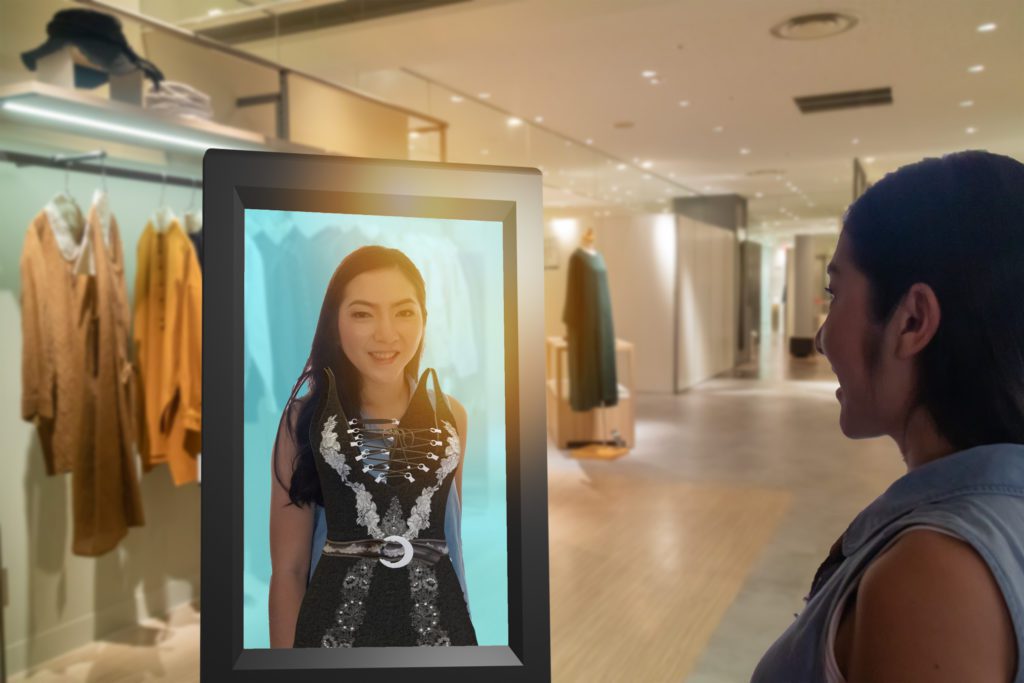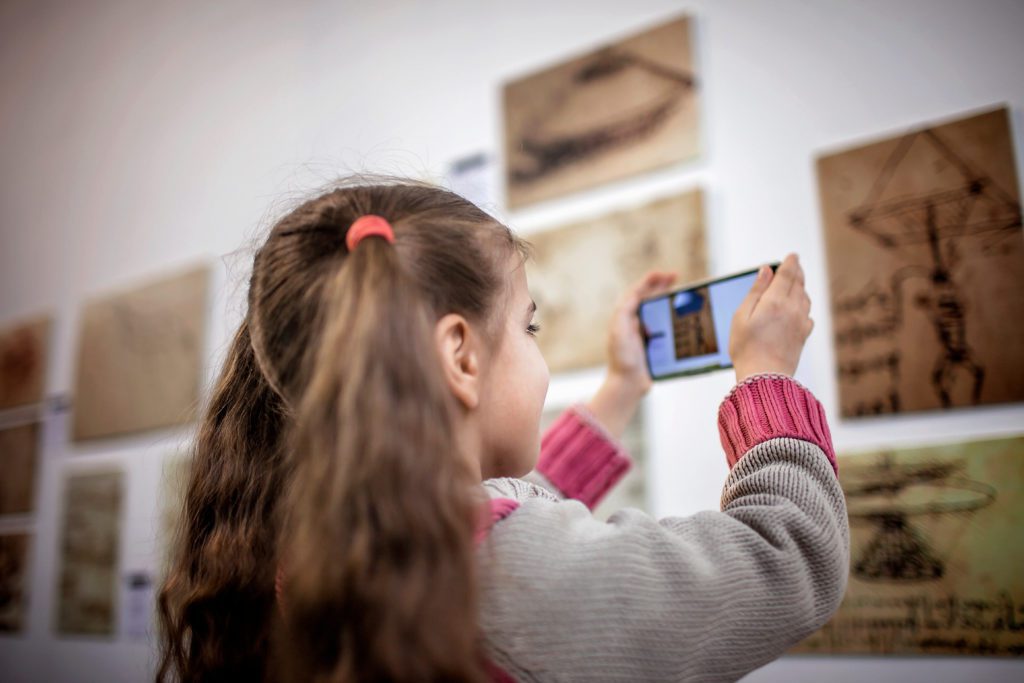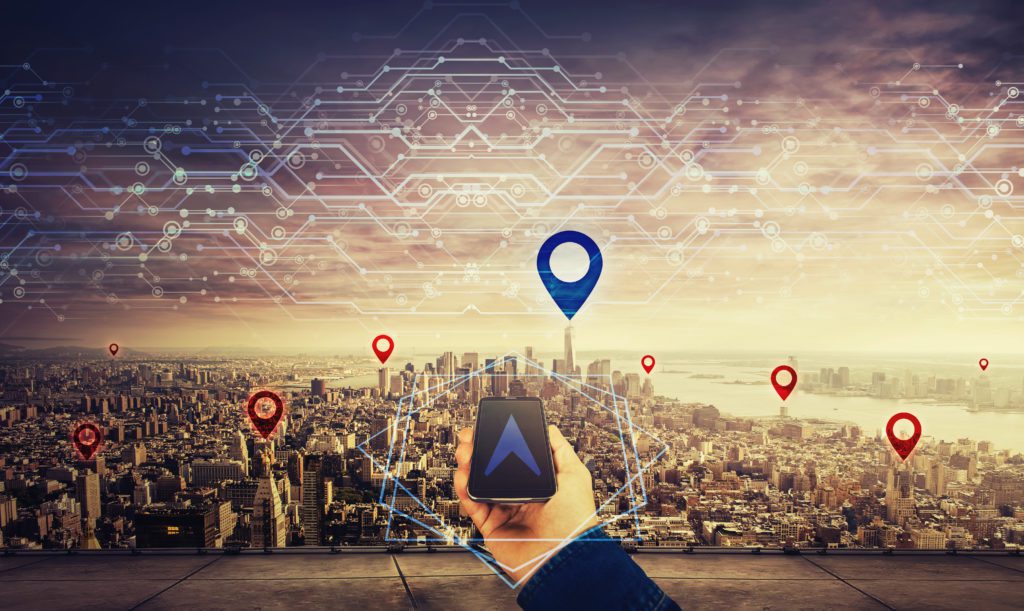By blending the real world with imagined digital content, augmented reality (AR) is a technology that has the power to entertain and amaze, as well as educate and inform people in equal measure.
What’s more, the accessibility of AR through widely-owned devices such as smartphones and comprehensive WIFI connectivity, coupled with creativity means that it has the potential to offer memorable shared experiences. This makes it a brilliant innovation for connecting people not only with new technologies, but with each other.

Five inspirational examples of augmented reality in practice
Causing a marketing buzz
One of the most obvious commercial applications for augmented reality is as a tool for experiential marketing. Brands as diverse as MAC makeup, through to Pepsi, Gucci and Toyota have embraced AR as a way of connecting with key audiences, as well as producing content that has the potential to go viral.
When Nike and Footlocker teamed up on an AR project, the results were both visually stunning and far reaching. By exploiting Snapchat’s AR marker tech, in-store posters of LeBron James were brought to life, with the 2D image morphing into a 3D digital model. Shoppers were treated to the basketball legend springing out of for a mind-bending digital slam dunk. But this wasn’t simply a successful in-store gimmick. With LeBron James tweeting video footage, the AR experience went viral online and shared with a global audience, reaching a whopping 1.25 views within an hour.
Gaining an insider’s view: transforming surgical procedures

Augmented reality is being embraced across the healthcare sector as a tool for practitioners to train effectively, work more precisely, communicate better with patients – and beyond.
Imperial College London at St Mary’s Hospital is blazing a trail in medical applications of immersive technologies, including augmented reality. In 2018, its team trialled an AR programme to help surgeons locate and reconnect key blood vessels during reconstructive surgery. Surgeons used Microsoft HoloLens headsets while operating on patients who were undergoing reconstructive lower limb surgery. CT scans images, such as the position of bones and key blood vessels are overlaid onto the patient’s leg, giving the surgeon the illusion that they can see through the limb throughout surgery.
The trial highlighted that by giving surgeon’s an inside view, AR technology can be harnessed to relay key information in an effective way to support the process of connecting the blood vessels so oxygenated blood can reach new tissue and keep it alive.This test programme also showed that AR is a potential gamechanger for medical procedures where speed and accuracy are crucial for positive patient outcomes.
Making an immersive fashion statement

Augmented reality is also changing the way that the fashion industry creates, showcases and sells products. From virtual changing rooms to support online retailers, through to the production of designer AR clothing that replaces physical items, the potential of AR has a variety of creative and practical applications that are limited only by the imagination.
For fashion designer Steven Tai, AR technology ensured his catwalk show stood out from the crowd during London Fashion Week. Developed in partnership with the Fashion Innovation Agency and Lucasfilm’s immersive arm, ILMxLAB, Steven’s live show combined virtual performances with a spectacular immersive backdrop. Over 1,000 guests experienced the slow transformation of the Foreign & Commonwealth Office location with a digital overlay of the streets of Macau, Steven’s home town. This was combined with the creation of a virtual model, who interacted in real time with models on stage, driven by realtime motion capture by ILMxLAB’s unique LiveCGX technology.
Bringing learning to life in galleries, museums and heritage sites

Augmented reality is a brilliant tool to bring exhibitions and objects at galleries, museums and heritage sites to life. And rather than competing with display items, AR’s power lies in its ability to keep objects at the centre of any shared visitor experience. AR technology can be applied to support and enhance storytelling, something that is at the heart of any visit to a museum or heritage site.
The 5G Smart Tourism Trial at the Roman Baths in Bath is a great example of how AR technology can tell stories to impart learning and spark the imagination. Developed by providing a magic window into the past, visitors got the chance to experience animated versions of the Roman Baths three different historical times; from the discovery of hot springs by King Bladud, through to a period of disrepair after the Romans left Britain, through to the Victorian Age and the regeneration of the Baths. Stunning animated visuals, created by Oscar-winning Aardman Animations, accompanied additional interesting information, triggered by specific ‘hotspot’ locations across the site.

Taking you to new places: AR in tourism
Where virtual reality can take us away to new and imagined places, augmented reality has the potential to support us in exploring our real world. Practical applications, such as removing language barriers and helping visitors to find their way around, through to locating great hotels, restaurants and places of interest can be addressed at the touch of a button. But there’s also more creative and unique ways that AR can help tourists connect to places they are visiting, by giving them an immersive experience in the history and culture of their destination.
Hidden Florence, a geo-locative based smartphone app developed by a team of historians led by the University of Exeter’s Professor Fabrizio Nevola and produced by AR studio Calvium. By combining AR and GPS technology, tourists can benefit from a truly immersive tour that provides a glimpse into the city’s incredible past. Visitors choose from five virtual tour guides from the 15th and 16th centuries, who share their stories while taking a physical journey through the streets of Florence, complete with a digitised copy of the Bonsignori Map.
How can augmented reality work for you?
Think your business or customers could benefit from an augmented reality experience? Contact Future Visual today and ask for a demo: https://www.futurevisual.com/visionxr
By blending the real world with imagined digital content, augmented reality (AR) is a technology that has the power to entertain and amaze, as well as educate and inform people in equal measure.
What’s more, the accessibility of AR through widely-owned devices such as smartphones and comprehensive WIFI connectivity, coupled with creativity means that it has the potential to offer memorable shared experiences. This makes it a brilliant innovation for connecting people not only with new technologies, but with each other.

Five inspirational examples of augmented reality in practice
Causing a marketing buzz
One of the most obvious commercial applications for augmented reality is as a tool for experiential marketing. Brands as diverse as MAC makeup, through to Pepsi, Gucci and Toyota have embraced AR as a way of connecting with key audiences, as well as producing content that has the potential to go viral.
When Nike and Footlocker teamed up on an AR project, the results were both visually stunning and far reaching. By exploiting Snapchat’s AR marker tech, in-store posters of LeBron James were brought to life, with the 2D image morphing into a 3D digital model. Shoppers were treated to the basketball legend springing out of for a mind-bending digital slam dunk. But this wasn’t simply a successful in-store gimmick. With LeBron James tweeting video footage, the AR experience went viral online and shared with a global audience, reaching a whopping 1.25 views within an hour.
Gaining an insider’s view: transforming surgical procedures

Augmented reality is being embraced across the healthcare sector as a tool for practitioners to train effectively, work more precisely, communicate better with patients – and beyond.
Imperial College London at St Mary’s Hospital is blazing a trail in medical applications of immersive technologies, including augmented reality. In 2018, its team trialled an AR programme to help surgeons locate and reconnect key blood vessels during reconstructive surgery. Surgeons used Microsoft HoloLens headsets while operating on patients who were undergoing reconstructive lower limb surgery. CT scans images, such as the position of bones and key blood vessels are overlaid onto the patient’s leg, giving the surgeon the illusion that they can see through the limb throughout surgery.
The trial highlighted that by giving surgeon’s an inside view, AR technology can be harnessed to relay key information in an effective way to support the process of connecting the blood vessels so oxygenated blood can reach new tissue and keep it alive.This test programme also showed that AR is a potential gamechanger for medical procedures where speed and accuracy are crucial for positive patient outcomes.
Making an immersive fashion statement

Augmented reality is also changing the way that the fashion industry creates, showcases and sells products. From virtual changing rooms to support online retailers, through to the production of designer AR clothing that replaces physical items, the potential of AR has a variety of creative and practical applications that are limited only by the imagination.
For fashion designer Steven Tai, AR technology ensured his catwalk show stood out from the crowd during London Fashion Week. Developed in partnership with the Fashion Innovation Agency and Lucasfilm’s immersive arm, ILMxLAB, Steven’s live show combined virtual performances with a spectacular immersive backdrop. Over 1,000 guests experienced the slow transformation of the Foreign & Commonwealth Office location with a digital overlay of the streets of Macau, Steven’s home town. This was combined with the creation of a virtual model, who interacted in real time with models on stage, driven by realtime motion capture by ILMxLAB’s unique LiveCGX technology.
Bringing learning to life in galleries, museums and heritage sites

Augmented reality is a brilliant tool to bring exhibitions and objects at galleries, museums and heritage sites to life. And rather than competing with display items, AR’s power lies in its ability to keep objects at the centre of any shared visitor experience. AR technology can be applied to support and enhance storytelling, something that is at the heart of any visit to a museum or heritage site.
The 5G Smart Tourism Trial at the Roman Baths in Bath is a great example of how AR technology can tell stories to impart learning and spark the imagination. Developed by providing a magic window into the past, visitors got the chance to experience animated versions of the Roman Baths three different historical times; from the discovery of hot springs by King Bladud, through to a period of disrepair after the Romans left Britain, through to the Victorian Age and the regeneration of the Baths. Stunning animated visuals, created by Oscar-winning Aardman Animations, accompanied additional interesting information, triggered by specific ‘hotspot’ locations across the site.

Taking you to new places: AR in tourism
Where virtual reality can take us away to new and imagined places, augmented reality has the potential to support us in exploring our real world. Practical applications, such as removing language barriers and helping visitors to find their way around, through to locating great hotels, restaurants and places of interest can be addressed at the touch of a button. But there’s also more creative and unique ways that AR can help tourists connect to places they are visiting, by giving them an immersive experience in the history and culture of their destination.
Hidden Florence, a geo-locative based smartphone app developed by a team of historians led by the University of Exeter’s Professor Fabrizio Nevola and produced by AR studio Calvium. By combining AR and GPS technology, tourists can benefit from a truly immersive tour that provides a glimpse into the city’s incredible past. Visitors choose from five virtual tour guides from the 15th and 16th centuries, who share their stories while taking a physical journey through the streets of Florence, complete with a digitised copy of the Bonsignori Map.
How can augmented reality work for you?
Think your business or customers could benefit from an augmented reality experience? Contact Future Visual today and ask for a demo: https://www.futurevisual.com/visionxr































